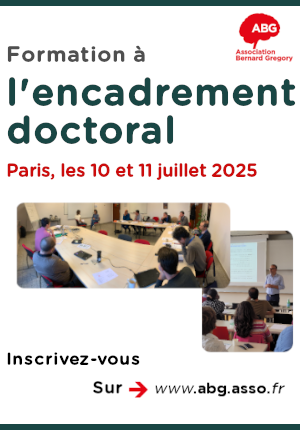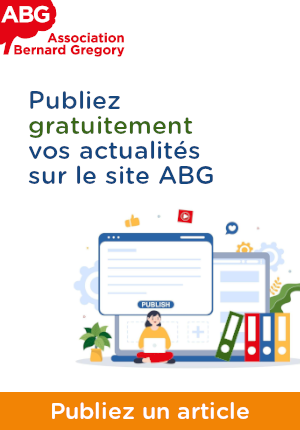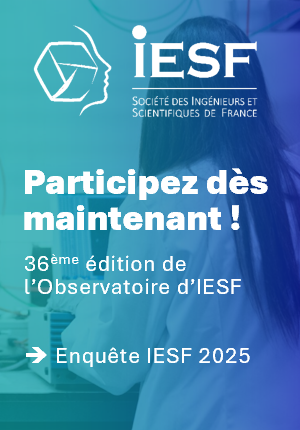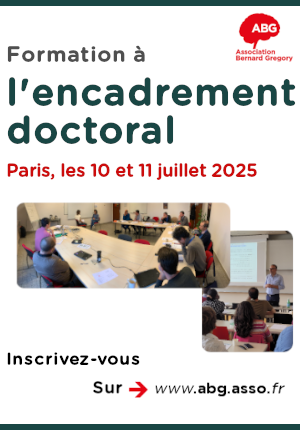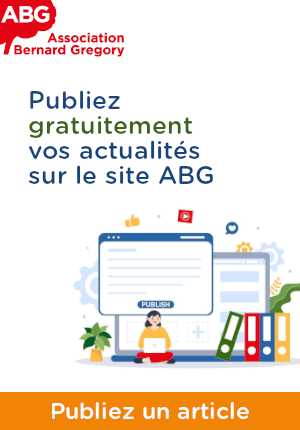Modélisation et simulation d'objets flottant dans des écoulements à surface libre // Modelization and Simulation of floating object in free surface flows
|
ABG-130908
ADUM-65010 |
Thesis topic | |
| 2025-04-11 | Public funding alone (i.e. government, region, European, international organization research grant) |
Université de Montpellier
MONTPELLIER CEDEX 5 - France
Modélisation et simulation d'objets flottant dans des écoulements à surface libre // Modelization and Simulation of floating object in free surface flows
- Mathematics
shallow-water, frontière libre, Galerkin discontinu, ordre élevé, hybrid high order methods
shallow-water, free boundary problem, discontinuous Galerkin , high order, HHO methods
shallow-water, free boundary problem, discontinuous Galerkin , high order, HHO methods
Topic description
La description de l'écoulement d'un fluide à surface libre irrotationnel et incompressible, en régime d'écoulement shallow-water peut être effectuée à l'aide de modèles asymptotiques afin d'autoriser des simulations à échelles réalistes. Des modèles physiques intégrés selon la dimension verticale, qui permettent tout de même une description très précise de l'écoulement aux échelles résiduelles modélisées, ont été ainsi récemment proposés, validés expérimentalement et implémentés numériquement, voir [1,2]. De tels modèles sont aujourd'hui des outils utilisés en ingénierie littorale pour la simulation des vagues.
Dans ces modèles asymptotiques, la résolution de problèmes à frontière libre et en particulier la prise en compte d'objets flottants (non-submergés) à la surface a été peu étudiée et demeure un challenge.
Différent travaux récents théoriques et numériques ont été menés récemment autour de la modélisation et la simulation du cas de la dimension 1 de surface voir [3-8] et [4-5] pour une approche DG-ALE et FV-subcells. Une thèse de doctorat est également en cours actuellement (fin de deuxième année) sur le cas de la modélisation du cas 2d de surface, avec obstacle en surface à parois verticales, avec utilisation de méthodes Monolithic issues de [6].
Sur le plan théorique, un travail très récent [7] a permis d'analyser rigoureusement une formulation non-linéaire prenant en compte la présence d'un obstacle 2d en surface de forme quelconque, menant à un problème à frontière libre associé à l'évolution de la ligne de contact triple fluide-air-obstacle et le cas de l'objet flottant complet est en cours d'étude.
Ainsi, dans cette continuité, nous proposons dans le cadre d'un nouveau projet de Contrat Doctoral, d'investiguer différents aspects, tant que sur les plans théoriques que pratiques, associé à la poursuite de ce projet:
1) d'une part, la modélisation du fluide contraint en surface dans le cas 2d fait apparaitre un modèle couplé hyperbolique – elliptique avec problème à frontière libre, caractérisé par la résolution d'un problème de Dirichlet-Neumann sous l'obstacle.
Nous proposons ici d'introduire un modèle d'approximation numérique couplé hyperbolique-elliptique, basé sur une interprétation discrète d'une transformation spécifique de type Hanzawa, permettant d'interpréter la ligne de contact fermée, sous-variété de dimension 1, comme un domaine torique indépendant du temps.
Une méthode hybride mixte de type Hybrid-High-Order (HHO) sera introduite et étudiée pour la résolution de ce problème, adaptée aux contraintes spécifiques du problème étudié et la régularité de la solution attendue sur la ligne de contact. En particulier, il est possible de construire une transformation régularisante permettant d'éviter la perte d'un demi-ordre de régularité en passant à la trace, dans le cas continu, et nous espérons parvenir à préserver cette propriété sur le plan discret.
2) d'autre part, nous souhaitons étendre la stratégie de couplage DG-ALE introduite dans [4-5] au cas des équations de Boussinesq (équations faiblement dispersives et faiblement non-linéaire), ainsi qu'au couplage de différents objets en série dans le cas 1d, pour étudier plus spécifiquement des problèmes de forçage et de réponse ou résonance associée.
.
Selon l'avancement des travaux, des applications à la modélisation mécanique de convertisseurs d'énergie des vagues pourront être abordées.
------------------------------------------------------------------------------------------------------------------------------------------------------------------------
------------------------------------------------------------------------------------------------------------------------------------------------------------------------
The description of the flow of an irrotational and incompressible free-surface fluid in a shallow-water flow regime can be performed using asymptotic models to enable simulations at realistic scales. Physical models integrated along the vertical dimension, which still allow a very accurate description of the flow at the modeled residual scales, have recently been proposed, experimentally validated, and numerically implemented (see [1, 2]. Such models are now widely used tools in engineering.
In these asymptotic models, the resolution of free-boundary problems, and in particular the consideration of floating (non-submerged) objects on the surface, has been little studied and remains a challenge.
Various recent theoretical and numerical studies have been conducted recently on the modeling and simulation of the 1-dimensional surface case; see [3-8] and [4-5] for a DG-ALE and FV-subcells approach. A doctoral thesis is also currently in progress (end of second year) on the case of modeling the 2d surface case, with surface obstacle with vertical walls, using Monolithic methods from [6].
On the theoretical side, a very recent work [7] has made it possible to rigorously analyze a non-linear formulation taking into account the presence of a 2d obstacle on the surface of any shape, leading to a free boundary problem associated with the evolution of the triple fluid-air-obstacle contact line and the case of the complete floating object is currently being studied.
Thus, in this continuity, we propose, within the framework of a new Doctoral Contract project, to investigate different aspects, both theoretical and practical, associated with the continuation of this project:
1) On the one hand, the modeling of the constrained fluid at the surface in the 2d case reveals a coupled hyperbolic-elliptic model with a free boundary problem, characterized by the resolution of a Dirichlet-Neumann problem under the obstacle.
We propose here to introduce a coupled hyperbolic-elliptic numerical approximation model, based on a discrete interpretation of a specific Hanzawa-type transformation, allowing the closed contact line, a 1-dimensional manifold, to be interpreted as a time-independent toric domain.
A mixed hybrid method of the Hybrid-High-Order (HHO) type will be introduced and studied for the resolution of this problem, adapted to the specific constraints of the studied problem and the regularity of the expected solution on the contact line. In particular, it is possible to construct a regularizing transformation that avoids the loss of half an order of regularity by traking the trace, in the continuous case, and we hope to succeed in preserving this property at the discrete level.
2) on the other hand, we wish to extend the DG-ALE coupling strategy introduced in [4-5] to the case of Boussinesq equations (weakly dispersive and weakly non-linear equations), as well as to the coupling of different objects in series in the 1d case, to study more specifically problems of forcing and associated response or resonance.
.
Depending on the advancement's speed, applications to the mechanical modeling of wave energy converters could be addressed.
------------------------------------------------------------------------------------------------------------------------------------------------------------------------
------------------------------------------------------------------------------------------------------------------------------------------------------------------------
Début de la thèse : 01/10/2025
Dans ces modèles asymptotiques, la résolution de problèmes à frontière libre et en particulier la prise en compte d'objets flottants (non-submergés) à la surface a été peu étudiée et demeure un challenge.
Différent travaux récents théoriques et numériques ont été menés récemment autour de la modélisation et la simulation du cas de la dimension 1 de surface voir [3-8] et [4-5] pour une approche DG-ALE et FV-subcells. Une thèse de doctorat est également en cours actuellement (fin de deuxième année) sur le cas de la modélisation du cas 2d de surface, avec obstacle en surface à parois verticales, avec utilisation de méthodes Monolithic issues de [6].
Sur le plan théorique, un travail très récent [7] a permis d'analyser rigoureusement une formulation non-linéaire prenant en compte la présence d'un obstacle 2d en surface de forme quelconque, menant à un problème à frontière libre associé à l'évolution de la ligne de contact triple fluide-air-obstacle et le cas de l'objet flottant complet est en cours d'étude.
Ainsi, dans cette continuité, nous proposons dans le cadre d'un nouveau projet de Contrat Doctoral, d'investiguer différents aspects, tant que sur les plans théoriques que pratiques, associé à la poursuite de ce projet:
1) d'une part, la modélisation du fluide contraint en surface dans le cas 2d fait apparaitre un modèle couplé hyperbolique – elliptique avec problème à frontière libre, caractérisé par la résolution d'un problème de Dirichlet-Neumann sous l'obstacle.
Nous proposons ici d'introduire un modèle d'approximation numérique couplé hyperbolique-elliptique, basé sur une interprétation discrète d'une transformation spécifique de type Hanzawa, permettant d'interpréter la ligne de contact fermée, sous-variété de dimension 1, comme un domaine torique indépendant du temps.
Une méthode hybride mixte de type Hybrid-High-Order (HHO) sera introduite et étudiée pour la résolution de ce problème, adaptée aux contraintes spécifiques du problème étudié et la régularité de la solution attendue sur la ligne de contact. En particulier, il est possible de construire une transformation régularisante permettant d'éviter la perte d'un demi-ordre de régularité en passant à la trace, dans le cas continu, et nous espérons parvenir à préserver cette propriété sur le plan discret.
2) d'autre part, nous souhaitons étendre la stratégie de couplage DG-ALE introduite dans [4-5] au cas des équations de Boussinesq (équations faiblement dispersives et faiblement non-linéaire), ainsi qu'au couplage de différents objets en série dans le cas 1d, pour étudier plus spécifiquement des problèmes de forçage et de réponse ou résonance associée.
.
Selon l'avancement des travaux, des applications à la modélisation mécanique de convertisseurs d'énergie des vagues pourront être abordées.
------------------------------------------------------------------------------------------------------------------------------------------------------------------------
------------------------------------------------------------------------------------------------------------------------------------------------------------------------
The description of the flow of an irrotational and incompressible free-surface fluid in a shallow-water flow regime can be performed using asymptotic models to enable simulations at realistic scales. Physical models integrated along the vertical dimension, which still allow a very accurate description of the flow at the modeled residual scales, have recently been proposed, experimentally validated, and numerically implemented (see [1, 2]. Such models are now widely used tools in engineering.
In these asymptotic models, the resolution of free-boundary problems, and in particular the consideration of floating (non-submerged) objects on the surface, has been little studied and remains a challenge.
Various recent theoretical and numerical studies have been conducted recently on the modeling and simulation of the 1-dimensional surface case; see [3-8] and [4-5] for a DG-ALE and FV-subcells approach. A doctoral thesis is also currently in progress (end of second year) on the case of modeling the 2d surface case, with surface obstacle with vertical walls, using Monolithic methods from [6].
On the theoretical side, a very recent work [7] has made it possible to rigorously analyze a non-linear formulation taking into account the presence of a 2d obstacle on the surface of any shape, leading to a free boundary problem associated with the evolution of the triple fluid-air-obstacle contact line and the case of the complete floating object is currently being studied.
Thus, in this continuity, we propose, within the framework of a new Doctoral Contract project, to investigate different aspects, both theoretical and practical, associated with the continuation of this project:
1) On the one hand, the modeling of the constrained fluid at the surface in the 2d case reveals a coupled hyperbolic-elliptic model with a free boundary problem, characterized by the resolution of a Dirichlet-Neumann problem under the obstacle.
We propose here to introduce a coupled hyperbolic-elliptic numerical approximation model, based on a discrete interpretation of a specific Hanzawa-type transformation, allowing the closed contact line, a 1-dimensional manifold, to be interpreted as a time-independent toric domain.
A mixed hybrid method of the Hybrid-High-Order (HHO) type will be introduced and studied for the resolution of this problem, adapted to the specific constraints of the studied problem and the regularity of the expected solution on the contact line. In particular, it is possible to construct a regularizing transformation that avoids the loss of half an order of regularity by traking the trace, in the continuous case, and we hope to succeed in preserving this property at the discrete level.
2) on the other hand, we wish to extend the DG-ALE coupling strategy introduced in [4-5] to the case of Boussinesq equations (weakly dispersive and weakly non-linear equations), as well as to the coupling of different objects in series in the 1d case, to study more specifically problems of forcing and associated response or resonance.
.
Depending on the advancement's speed, applications to the mechanical modeling of wave energy converters could be addressed.
------------------------------------------------------------------------------------------------------------------------------------------------------------------------
------------------------------------------------------------------------------------------------------------------------------------------------------------------------
Début de la thèse : 01/10/2025
Funding category
Public funding alone (i.e. government, region, European, international organization research grant)
Funding further details
Concours pour un contrat doctoral
Presentation of host institution and host laboratory
Université de Montpellier
Institution awarding doctoral degree
Université de Montpellier
Graduate school
166 I2S - Information, Structures, Systèmes
Candidate's profile
L'étudiant(e) recherché devra avoir une solide formation initiale en Mathématiques Appliquées et en particulier en Analyse Numérique. Il (Elle) devra savoir programmer en C++. Des connaissances en mécaniques des fluides sont bienvenues.
the candidate should be skilled in Numerical Analysis and C++ programmation.
the candidate should be skilled in Numerical Analysis and C++ programmation.
2025-05-04
Apply
Close
Vous avez déjà un compte ?
Nouvel utilisateur ?
More information about ABG?
Get ABG’s monthly newsletters including news, job offers, grants & fellowships and a selection of relevant events…
Discover our members
 Nokia Bell Labs France
Nokia Bell Labs France  MabDesign
MabDesign 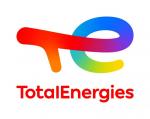 TotalEnergies
TotalEnergies 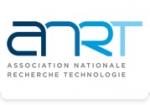 ANRT
ANRT  SUEZ
SUEZ  CESI
CESI  Tecknowmetrix
Tecknowmetrix  Ifremer
Ifremer  Institut Sup'biotech de Paris
Institut Sup'biotech de Paris  MabDesign
MabDesign  ONERA - The French Aerospace Lab
ONERA - The French Aerospace Lab 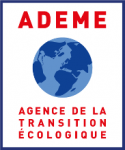 ADEME
ADEME  ASNR - Autorité de sûreté nucléaire et de radioprotection - Siège
ASNR - Autorité de sûreté nucléaire et de radioprotection - Siège  Laboratoire National de Métrologie et d'Essais - LNE
Laboratoire National de Métrologie et d'Essais - LNE  CASDEN
CASDEN  Généthon
Généthon  Aérocentre, Pôle d'excellence régional
Aérocentre, Pôle d'excellence régional 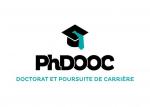 PhDOOC
PhDOOC  Groupe AFNOR - Association française de normalisation
Groupe AFNOR - Association française de normalisation

